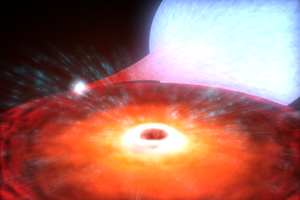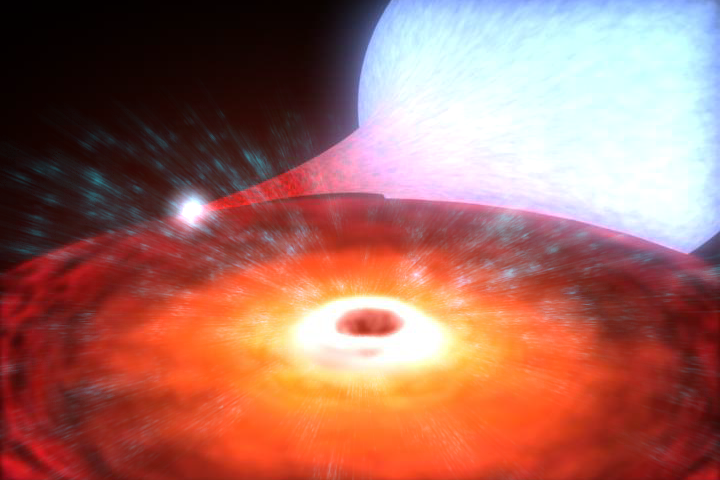Black Holes May Produce Lithium
Standard cosmology predicts with great accuracy the amounts of hydrogen and helium produced right after the big bang, but the lithium predictions appear to be way too high. In Physical Review Letters, a team calculates that hundreds of thousands of black holes in our galaxy may also produce substantial amounts of lithium because the hot cloud of matter surrounding them can generate nuclear fusion. If borne out by observations, the new theory could make it even harder to explain where all of the lithium went.
The lithium problem has puzzled researchers for three decades. The spectra of the most ancient and pristine stars in our galaxy reveal abundances of the isotope lithium- 7 that vary little from one star to the next. But the abundances of other heavier elements vary considerably. Some have interpreted the uniformity as a sign that most of the lithium- 7 in the ancient stars has a common origin, namely, the nuclear fusion that took place beginning a few minutes after the big bang. Big bang theory correctly predicts the abundances for deuterium, helium- 3, and helium- 4, but ancient stars seem to contain only half or less of the expected amount of lithium- 7. Researchers have proposed various solutions to this lithium problem, such as mechanisms that could get rid of some of the lithium in the early universe.
But more recent data have complicated this picture. Astronomers found that lithium- 7 in ancient stars isn’t perfectly uniform and that some of the slowest evolving stars in this population have significantly less lithium- 7 than the others. So this smaller amount of lithium seems to have appeared earlier in the life cycle of these stars, and only later did they develop the mostly-uniform abundance, according to some astrophysicists. This scenario could completely change the story, suggesting that the uniform level in most of these stars is not from the big bang but appeared later, a result of some as-yet undiscovered lithium source.
So astrophysicists have been searching for processes that could produce additional lithium (sources) and others that could destroy it (sinks). Still, many in the field believe that the original lithium problem remains—there is a lot less lithium than big bang theory predicts. Adding a new piece of information to the lithium puzzle, Fabio Iocco of Stockholm University and Miguel Pato of the Technical University of Munich have now found a potentially very large source of lithium- 7 in microquasars. These are x-ray sources belonging to binary star systems, and astronomers believe them to be black holes left behind by supernovae. Matter from the partner star swirls around the black hole like water circling a drain, and under some conditions forms an especially hot torus, rather than the usual colder disk shape. The matter accelerates to close to the speed of light and can reach 100 billion degrees Kelvin. In such conditions, the two theorists calculate, pairs of helium nuclei can collide and produce lithium- 7, some of which is ultimately ejected out into space, along with other material from the torus.
The authors conclude that if hot accretion tori are common enough—constituting just one percent of the stellar-mass black holes in our galaxy—the mechanism could have produced as much lithium- 7 as the big bang. But they say that observations will be needed to find out exactly how common such microquasars are and how much lithium they produce. “We do not claim to know that microquasars necessarily have that kind of yield,” says Iocco. “But our provocative message is that physics could allow it.”
“The study opens up intriguing possibilities,” says Martin Asplund of the Australian National University in Canberra. “The question is how many of these accreting black hole systems existed in the earliest epochs of the universe and how much of the produced lithium ended up in subsequent generations of stars.”
–Davide Castelvecchi
Davide Castelvecchi is a freelance science writer in Rome.





